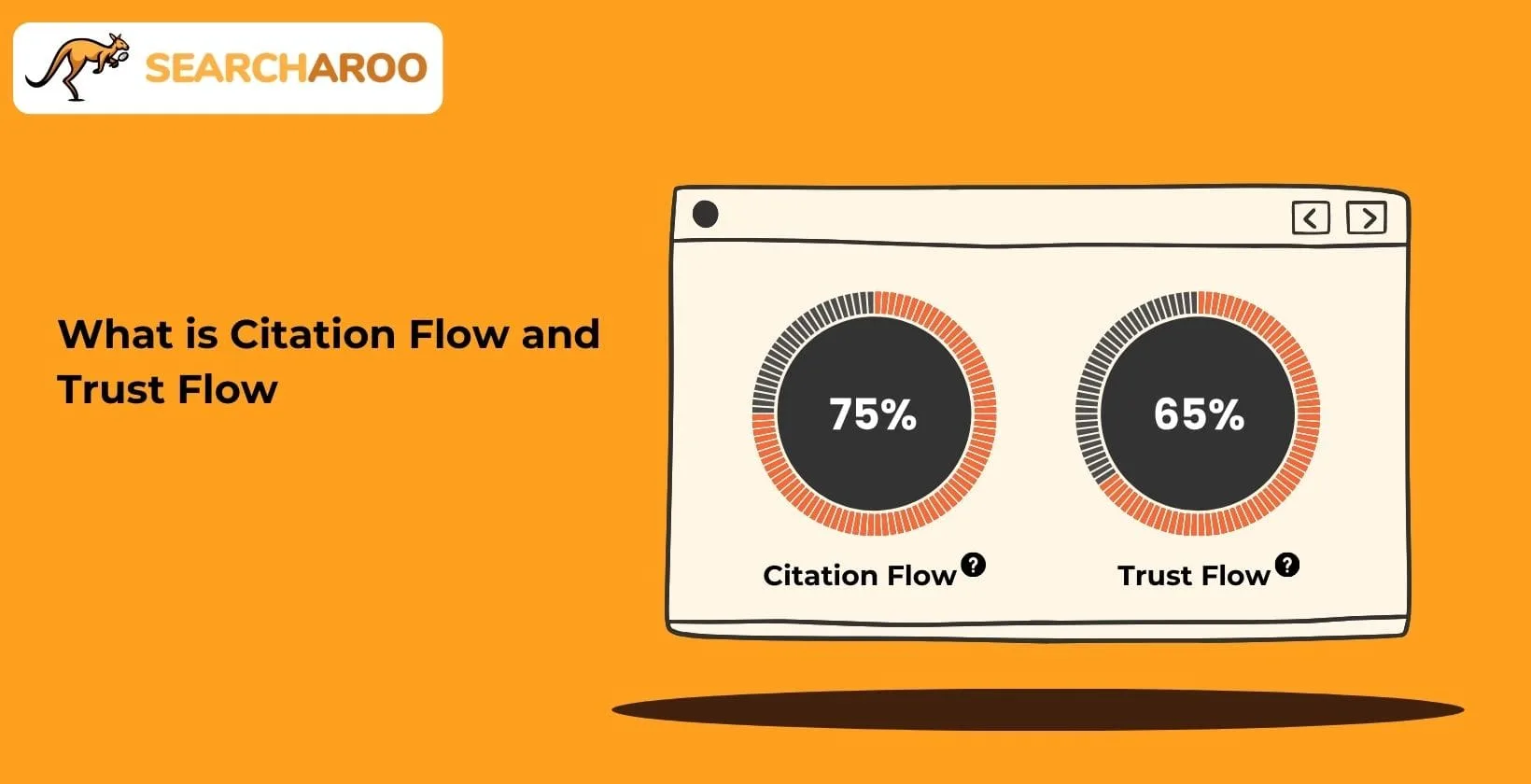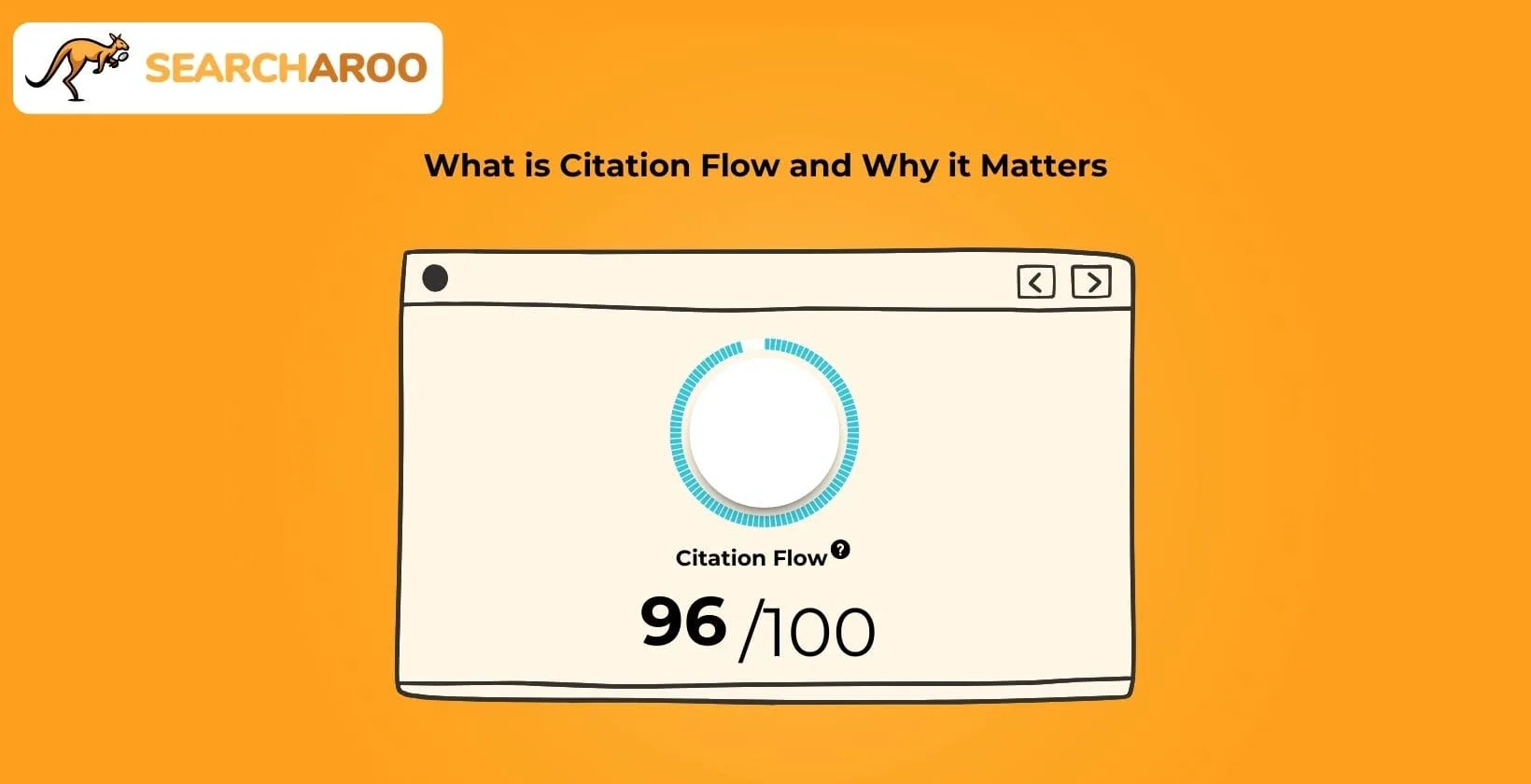In the world of SEO, citation flow stands out as a key metric. It evaluates a website’s influence based on its number of linked sites.
Trust flow is another closely related critical metric that assesses the quality of these links. Both play pivotal roles in managing a website’s backlink profile effectively.
Understanding these metrics helps improve your site’s credibility and ranking, paving the way for a deeper look at how trust flow works alongside citation flow to assess link quality.
What is Citation Flow and Trust Flow?

Citation flow is a proprietary metric developed by Majestic SEO that measures a website’s link popularity by quantifying how frequently a website receives backlinks from other sites, which serves as an indicator of the website’s influence in its online ecosystem.
Citation flow works alongside trust flow, with citation flow measuring the quantity of backlinks while trust flow gauges the reliability and quality of these links, creating a complementary system that comprehensively assesses a site’s backlink profile from both volume and quality perspectives.
Citation flow plays a significant role in SEO strategies by helping marketers identify and evaluate the strength of a website’s backlink profile, which directly influences search engine rankings and domain authority, while trust flow focuses on the quality of the referring domains rather than just counting the number of links a web page garners.
Both metrics are independent of Google’s algorithm but are broadly applied in SEO to evaluate site performance.
Despite their distinct purposes, citation and trust flow are often discussed, reflecting their joint application in assessing backlink profiles.
Understanding how often a site is cited can pave the way for deeper insights into its SEO health and potential for online growth. How is this measurement of citation flow carried out?
How is Citation Flow Measured?
Citation flow measures backlink influence by evaluating the quality and count of backlinks directed at a website, assigning a numerical score from 0 to 100, where a high score indicates numerous quality backlinks, whereas a lower score suggests a shortfall in the links’ quantity or quality.
This metric simplifies distinguishing between high and low-quality backlinks to a site, streamlining a process that could otherwise be very time-consuming.
Citation flow enables effective backlink profile management by helping SEO professionals identify superior backlinks and eliminate undesirable ones based on quantitative analysis, which streamlines the process of maintaining a healthy link profile that contributes positively to search rankings. Understanding the origins of citation flow and Trust Flow metrics reveals the foundation of their development.
How Were Citation Flow and Trust Flow Metrics Created?
Majestic SEO created and maintains the citation flow metric by gathering extensive link data from prominent seed sites like Facebook and Google, which establishes Majestic as the authoritative source for this particular backlink measurement system in the SEO industry.
They then used a logarithmic scale to assess the quality and volume of backlinks, akin to domain authority measurements. Citation flow offers insights into the quality of a website’s links, providing an alternative to link equity.
Although citation and trust flow provide valuable insights into a website’s backlink profile, they complement rather than replace traditional SEO metrics like authority scores.
Learning how to leverage these metrics can help optimize your SEO strategy. The next step is to become familiar with accessing and interpreting citation flow and trust flow metrics, which will ensure your website stands out in search rankings.
How Do You Access Citation Flow and Trust Flow Metrics?
The Majestic site SEO chart uses a 0 to 100 scale to plot each page or site’s citation flow and trust flow, with citation flow on the X-axis and trust flow on the Y-axis.
This method provides a quick way to evaluate the referring domains to a site by showing the correlation between these metrics without individually assessing each site’s data.
As the number of backlinks to a site increases, the chart’s value grows, particularly useful for comparing multiple sites. Each point on the chart represents a link to your site, where each link’s trust and quality are assessed by its backlinks.
The chart focuses solely on evaluating links for their SEO impact, irrespective of the traffic they may bring.
This approach clarifies the direct influence of backlinks and subtly introduces the importance of using citation flow as a strategic element in SEO planning.
Using Citation Flow

Citation and trust flow are intuitive metrics that gauge the quality of a site’s backlinks. Ideally, citation and trust flow should approach 100, indicating high-quality backlinks.
If these metrics are unbalanced, addressing the weaker area—whether increasing the number of links for citation flow or enhancing link quality for trust flow—can improve your site’s performance.
Using citation and trust flow helps assess the quality of a site’s backlinks. A low citation flow suggests a need for more backlinks, while a low trust flow indicates poor link quality.
For new websites scoring low in both, enhancing trust through quality links and increasing backlinks quantitatively is essential. Improving these aspects raises a site’s profile and capability to generate more business-to-business leads.
With a solid grasp of how these metrics function, one can better interpret their influence on website traffic and authority.
How to Interpret Citation Flow
Citation flow is a metric specific to your website, reflecting the number of links from various sources. This measurement focuses on the quantity of these links, akin to a vote of confidence from other sites, without favoring any particular search engine.
With a robust citation flow, your website demonstrates strong connectivity, which is critical for search engine rankings. Such connectivity indicates that numerous sites consider your content valuable, enhancing your online presence.
While the simplicity of this metric makes it accessible for understanding your site’s link-based value, one might wonder if there are any limitations to relying solely on citation flow.
Could focusing predominantly on the quantity of links overlook other essential aspects of link quality and its impact on search engine optimization?
Does Citation Flow Have Drawbacks
Relying solely on citation flow or trust flow data presents challenges. Each set can detect either a high number of low-quality links or a scarcity of links, which is useful for planning your link-building strategy. However, without both metrics, the full picture remains unclear.
Consider a scenario where your website has low citation levels, suggesting a need for more links. Without knowing your trust flow, you might acquire numerous links from various sources that could degrade your site’s link quality.
Similarly, purchasing links from a service that increases your citation flow without enhancing trust could harm your site, particularly if you operate an ecommerce business.
Citation flow presents limitations as a standalone metric because citation flow is not integrated with search engines like Google and does not mirror the search engine’s actual response to link quality or factor in organic traffic benefits, which necessitates using it alongside other SEO metrics for comprehensive analysis.
Utilizing either measurement alone may lead to misconceptions, such as believing your link profile is poor and compensating with more low-quality links.
These tools should be part of a broader strategy to improve your site’s credibility and appeal to search engines. In enhancing your website, considering citation and trust flows helps ensure that your efforts lead to more effective search engine optimization.
By managing these elements carefully, you’ll be better positioned to increase your website’s citation and trust, ensuring it ranks higher in search results.
Boosting Website Citation and Trust Flows
Enhancing your website through measured metrics is straightforward. Each piece of data offers a clear picture of your backlink quality and quantity, pinpointing precisely where improvements are needed.
Citation flow can be optimized by strategically increasing the number of linking opportunities to your website, especially across diverse URLs and pages from authoritative domains, which creates a broader network of backlinks that signals greater influence to search engines.
Standard link-building techniques, including keyword research, guest posting, backlink audits, improving internal links, and routinely removing spam links from your backlink profile, remain effective.
These metrics serve as neutral indicators of your site’s performance, enabling you to integrate them with any website or SEO tools you use, much like how domain authority represents your site’s standing and respectability among search engines.
With such tools at our disposal, we might naturally question the possible scale of improvement, sparking curiosity about the extent to which various sites might enhance their trust and citation metrics through similar strategies.
How Many Sites Benefit From Increasing Trust and Citation Flows?
Increasing flow values on your website or specific pages is undoubtedly beneficial. These values, akin to measures of authority, gauge your site’s success, and enhancing them helps drive your website toward its full potential.
Using tools like Google might make domain authority measurements appear more valuable. Yet, Majestic’s flow metrics, including topical trust flow, comprehensively gauge a page’s subject-specific influence.
These metrics are crucial when conducting manual reviews of any part of your site, from individual blog posts to the entire root domain. They provide immediate insights into link weaknesses and serve as reliable indicators of your site’s progressive enhancements.
Enhancing SEO Through Citation and Trust Flow Metrics
In conclusion, integrating citation and trust flow into SEO practices offers a robust framework for enhancing website credibility and authority.
By measuring both the quantity and quality of backlinks, these metrics provide a comprehensive view of a website’s influence and trustworthiness online.
By strategically applying these tools, websites can effectively diagnose and enhance their backlink profiles, leading to improved search engine rankings and increased visibility.
As we continue to navigate the complexities of SEO, understanding and leveraging citation and trust flow is crucial for any digital marketer aiming to optimize a site’s performance.
These metrics highlight areas of improvement and guide the development of strategies to strengthen a site’s overall SEO health.
Ultimately, websites can achieve sustained growth and a competitive edge in the digital landscape by fostering a better understanding of these dynamics.





